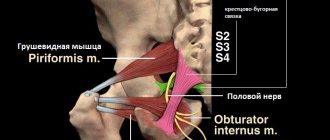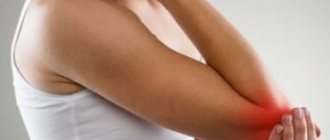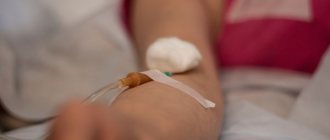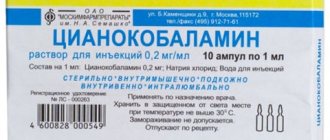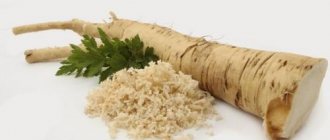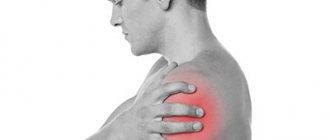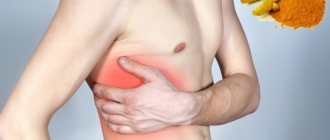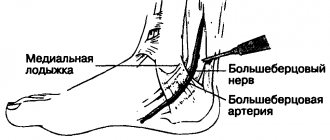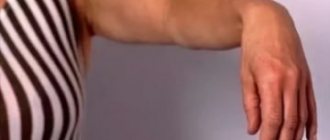Ulnar nerve compression (UCN) can occur in two places: at the elbow and at the wrist. SLN at the elbow joint occurs in the cubital tunnel (cubital tunnel syndrome). Ulnar nerve neuropathy in the cubital tunnel is the second most common compression neuropathy (the first most common neuropathy is associated with entrapment of the median nerve in the carpal tunnel). Ulnar neuropathy is less commonly seen in Guyon's canal (Guyon's canal syndrome/ulnar carpal syndrome).
Causes
SLN in the cubital and Guyon's canals occurs due to repetitive compression due to support on the elbows or wrists (cyclist's palsy) or prolonged flexion of the elbow. It can also occur due to trauma, swelling, fracture, vascular and bone pathologies/disorders.
Ulnar carpal syndrome occurs when the ulnar nerve becomes compressed between the hook of the hamate bone and the transverse carpal ligament. Guyon's canal syndrome is considered an overuse injury that is typically caused by direct pressure on the handlebars (eg, bicycle handlebars, weight lifting, heavy equipment) and is thus sometimes referred to as "steering wheel palsy." This syndrome may also result from intense gripping, rotation, or repetitive movements of the wrist and hand. Impingement can develop if the hand is flexed and the elbow is abducted for an extended period of time.
The incidence of injuries leading to ulnar nerve compression is unknown; however, ulnar neuropathy has been documented after distal humerus fractures, of which up to 10% are associated with elbow dislocation, and can also develop following any complex trauma to the elbow or wrist.
How does a neurologist identify symptoms of ulnar nerve neuritis?
First of all, the doctor conducts a conversation with the patient - from it it becomes clear that the main problem with which the person came is neurological disorders of the arm and hand. A general neurological examination is required - the doctor needs to assess the state of the nervous system as a whole, because the symptoms of neuritis can be caused by another, more serious disease.
The neurologist can then perform some simple tests that will help identify the characteristic signs of ulnar neuritis:
- If you clench your hand into a fist, the little finger, ring finger and partly the middle finger will not bend completely.
- If you put your hand on the table, palm down, and try to “scratch” the surface of the table with your little finger, you won’t be able to do it.
- Also, in this position, it will not be possible to bring your fingers together and spread them apart; this will be especially noticeable on the middle, ring, and little fingers.
Clinical picture
Symptoms of ulnar nerve compression include tingling in the 4th and 5th fingers, weakness when grasping objects with the hand, pain and tenderness in the ulnar aspect of the wrist, forearm and hand, muscle atrophy, and inability to straighten the 4th and 5th fingers (a sign of blessing).
Cubital tunnel syndrome can manifest itself in varying degrees of severity:
Grade I: Mild symptoms such as:
- Periodically occurring paresthesia.
- Some decrease in sensitivity of the dorsal and palmar surfaces of the fifth and medial parts of the fourth fingers.
- No movement disorders.
Grade II: Moderate and persistent symptoms such as:
- Paresthesia.
- Hypesthesia of the dorsal and palmar surfaces of the fifth and medial parts of the fourth fingers.
- Mild weakness in the muscles innervated by the ulnar nerve.
- Early signs of muscle atrophy.
Grade III: Severe symptoms such as:
- Paresthesia.
- There is obvious loss of sensation on the dorsal and palmar surfaces of the fifth and medial aspects of the fourth fingers.
- Significant functional and motor impairments.
- Muscular atrophy of the deep muscles of the hand.
- Inability to straighten the fourth and fifth fingers (a sign of blessing).
Symptoms of Guyon's canal syndrome include:
- Muscle atrophy - mainly in the hypothenar and interosseous muscles, without affecting the palmar muscles:
- weakness when abducting and adducting the fingers (interosseous muscles);
- weakness in adduction of the thumb (abductor pollicis muscle).
- Sensation loss and pain that may involve the palmar aspect of the fifth finger and the medial aspect of the fourth finger, but the dorsal and medial aspect of the fourth finger and the dorsal aspect of the fifth finger do not lose sensation.
- The symptom of a “clawed” hand (a sign of blessing) may be present.
What is a clawed hand and what does it look like?
Claw hand is a term used to describe the characteristic position of the hand, particularly the fingers, resulting from injury or palsy of the ulnar nerve. The ulnar nerve is a peripheral mixed nerve - it contains both sensory and motor fibers. To put it simply, we can say that the ulnar nerve supplies sensorimotor nerve fibers to the 5th and 4th fingers and half of the 3rd finger, as well as partially to other muscles of the hand. Injury or paralysis of the ulnar nerve will result in an unnatural position of the IV and V. The IV and V fingers straighten at the metacarpophalangeal joints and flex the interphalangeal joints. Additionally, this leads to a visit to finger B.
The pathological arrangement of the fourth and fifth fingers resembles the arrangement of the claws, therefore, the effect of ulnar nerve palsy is determined by the claw hand. The abolition of sensorimotor innervation of the fingers leads to contraction of the muscles of the fingers and muscles located in the metacarpal bone.
Physiotherapeutic examination
Elbow carpal syndrome: It is important to rule out other diagnoses that may be related to the elbow joint. Physical examination includes:
- Assessment of range of motion of the wrist and fingers.
- Manual muscle testing of the ulnar nerve muscles innervated distal to Guyon's canal.
- Sensory examination of the cutaneous branches of the ulnar nerve distal to Guyon's canal
- Assessment of atrophy of the deep muscles of the hand.
Friends, on April 11-12 in Moscow there will be a seminar by Anna Ovsyannikova “Fundamentals of anatomy and biomechanics of the hand. Diseases and injuries of the hand and fingers." Find out more...
Special tests
- "Card" test.
- Froment's sign
- Tinnel's sign in Guyon's canal.
- The Ulnar Nerve Neurodynamic Test (ULTT3) may increase the patient's symptoms.
Diagnostic tests to determine ulnar nerve compression
- Visualization of osteoarthritis, osteophytes or bone cysts.
- Nerve conduction studies (EMG).
- If there is a suspicion of a fracture/dislocation, a plain X-ray.
Criteria for evaluation
- Disabilities of the Arm, Shoulder, and Hand (DASH) is a 30-question questionnaire designed to assess patient function and symptoms.
- The Patient Specific Functional Scale (PSFS) is a questionnaire used to assess a patient's activity limitations and functional outcomes.
- The DASH assessment criteria are a questionnaire that assesses a patient's functional ability and symptom severity.
- The Upper Extremity Functional Inventory (UEFI) is a 20-question questionnaire designed to measure the severity of complex tasks performed throughout the day.
Physical therapy
- An impairment assessment approach may be used to identify strength deficits, decreased range of motion, and problems in achieving functional goals.
- The source of pain must be treated in conjunction with the disorder.
- After treatment, re-evaluate the functional tasks that caused pain to determine the effect of treatment.
- Create an exercise program to do at home to treat impairments and perform functional tasks.
A study conducted by Swernlov compared three types of treatment for patients with elbow tunnel syndrome. All three groups showed positive results; the control group showed similar improvement as the intervention groups.
- Splint group protocol —patients wore an elbow splint every night for 3 months to prevent elbow flexion greater than 45 degrees.
- Neural glide protocol – patients did neurodynamic exercises twice a day in six different positions, which were held for 30 seconds (three sets); the break between repetitions was 1 minute. Patients were instructed how to perform these exercises until their next follow-up visit, which was 1–2 weeks later. If no symptoms were found at the next visit to the doctor, the frequency of exercise was increased to three times a day with the position held for 1 minute (every day for 3 months).
- Control Group Protocol – The control group received only educational recommendations.
According to a study report by Coppieters, administration of elbow joint mobilization, thoracic spine and rib thrust manipulation, and ulnar nerve glide/tension techniques for 6 sets was associated with a reduction in elbow pain and a significant improvement in scores on a self-assessment questionnaire. cervical spine for at least ten months of observation. Patients reported a history of symptoms in the two months prior to physical therapy.
What treatment options are there for claw hand?
Bird's foot is often treatable. With treatment, symptoms may improve or disappear completely, depending on the cause and severity of your condition. The type of treatment that's best for you will depend on what's causing your symptoms.
Physiotherapy
Your doctor may recommend physical therapy to help you achieve greater flexibility in your hands and fingers. Physical therapy may consist of stretching and strengthening exercises. Physiotherapy can be the only type of treatment, or it can be combined with other types of treatment.
Treatment at home
If your crooked fingers are caused by injury, the only thing you need is to rest your hand. Your doctor may also recommend that you wear a brace to keep your wrist straight to prevent further injury.
Surgery may be required to treat damaged nerves, ligaments, or muscles. If your injury is caused by tight skin, as in people with burn injuries, skin grafts and surgery to remove scar tissue may be required. In case of severe defects and burn wounds, multiple operations may be necessary.
Medications
Your doctor may prescribe medication to treat the underlying condition that is causing your symptoms. Leprosy, for example, is treated with antibiotics.
Sources:
Impulse follows strict sourcing guidelines and relies on peer-reviewed studies, research institutions and medical associations. We avoid using insufficiently expert links.
- Hansen's disease (leprosy). (2017). cdc.gov/leprosy/index.html
- Lane R, et al. (2019). Claw hand. ncbi.nlm.nih.gov/books/NBK507781/
- National Hansen's disease (leprosy) program caring and curing since 1894. (2019). hrsa.gov/hansensdisease/
- Ulnar nerve entrapment at the elbow (cubital tunnel syndrome). (2015). orthoinfo.aaos.org/en/diseases—conditions/ulnar-nerve-entrapment-at-the-elbow-cubital-tunnel-syndrome/
- Wheeless CR. (2012). Intrinsic weakness and claw hand. wheelessonline.com/ortho/intrinsic_weakness_and_claw_hand
Differential diagnosis
The cervical spine and shoulder girdle should be examined to rule out diagnoses that may relate to the elbow joint. There are many differential diagnoses for ulnar nerve entrapment.
- Elbow fracture/dislocation.
- Cervical radiculopathy.
- Thoracic outlet syndrome.
- Peripheral vascular disease.
- Damage to the collateral ligament of the elbow joint.
- Rheumatoid arthritis.
- Medial epicondylitis.
- Acute polyradiculoneuritis (Guillain-Barré syndrome).
- Neuropathy associated with alcohol (ethanol) consumption.
- Amyotrophic lateral sclerosis.
- Tumor of the apex of the lung.
- Primary bone tumors.
- Peripheral polyneuropathy.
Diagnostics
A neurologist will identify ulnar nerve neuropathy based on characteristic symptoms and the results of an objective examination.
To establish the diagnosis of ulnar nerve neuropathy, it is necessary to conduct a neurological examination with a tapping test. A very informative method is electroneuromyography, which allows you to determine the level of damage to nerve fibers and even differentiate, if necessary, damage to the ulnar nerve from damage to the nerve roots that form its trunk (damage to the roots occurs in the area where they exit the spinal cord and vertebral foramina, although clinical symptoms may resemble neuropathy ulnar nerve). Diagnosis of ulnar nerve neuropathy is not particularly difficult if the doctor is attentive to the existing symptoms.
Key Points of Physical Therapy
- Special tests used in diagnosing ulnar nerve entrapment have very high sensitivity - 0.98 or higher - and are therefore very useful in making the diagnosis.
- Conservative treatment is effective in approximately 50% of cases, while surgery is effective in 60-95% of cases.
- Conservative treatment has been shown to be effective when introducing the use of orthoses and manual therapy, including neurodynamics and joint mobilization; however, a recent study highlighted that more research is needed to know when conservative versus surgical treatment is needed.
- A patient who begins conservative treatment earlier has a 30% higher chance of avoiding surgery.
